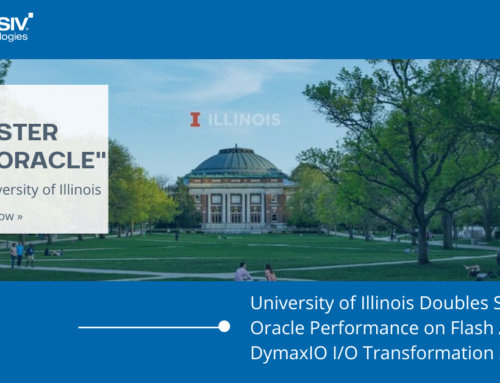As much as we commonly mention the expected performance gains from V-locity® I/O reduction software is 50-300% faster application performance, that 50-300% can represent quite a range – a correlation relative to how badly systems are taxed by I/O inefficiencies in virtual environments that are subsequently streamlined by V-locity. While some workloads experience 300% throughput gains, other workloads in the same environment see 50% gains.
While there is already plenty of V-locity performance validation represented in 15 published case studies that all reveal a doubling in VM performance, we wanted to get an idea of what V-locity delivers on average across a large scale. So we decided to take off our “rose-colored” glasses of what we think our software does and handed over the last 3,450 VMs that tested V-locity to ESG Labs, who examined the raw data from over 100 sites and PUBLISHED THE FINDINGS IN THIS REPORT.
Here are the key findings:
· Reduced read I/O to storage. ESG Lab calculated 55% of systems saw a reduction of 50% in the number of read I/Os that get serviced by the underlying storage
· Reduced write I/O to storage. As a result of I/O density increases, ESG Lab witnessed a 33% reduction in write I/Os across 27% of the systems. In addition, 14% of systems experienced a 50% or greater reduction in write I/O from VM (virtual machine) to storage.
· Increased throughput. ESG Lab witnessed throughput performance improvements of 50% or more for 43% of systems, while 29% of systems experienced a 100% increase in throughput, and as much as 300% increased levels of throughput for 8% of systems.
· Decreased I/O response time. ESG Lab calculated that systems with 3GB of available DRAM achieved a 40% reduction in response time across all I/O operations.
· Increased IOPS. ESG Lab found that 25% of systems saw IOPS increase by 50% or more.
The key take-away from this analysis is demonstrating the sizeable performance loss virtualized organizations suffer in regard to I/O inefficiencies that can be easily solved by V-locity streamlining I/O at the guest level on Windows VMs. Whereas most organizations typically respond to I/O performance issues by taking the brute-force approach of throwing more expensive hardware at the problem, V-locity demonstrates the efficiencies organizations achieve at a fraction of the cost of new hardware by simply solving the root-cause problem first.



Leave A Comment
You must be logged in to post a comment.